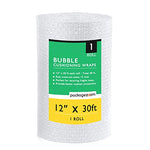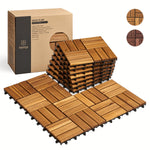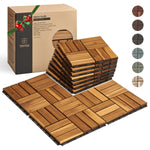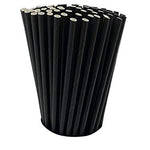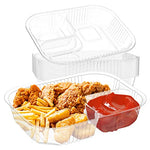You have no items in your shopping cart.
Are you tired of struggling with stubborn bucket lids that refuse to open or stay securely in place? Fret not! In this article, we will explore various techniques to securely fasten and effortlessly remove a bucket lid. Whether it's a household chore or an industrial task, our expert advice and first-hand knowledge will equip you with the necessary skills to handle any bucket lid situation with ease.
How do you secure and remove a bucket lid?
Let's dive right into the heart of the matter - securing and removing a bucket lid! We'll start with the most fundamental methods and gradually progress to more advanced techniques to ensure you can handle any bucket lid challenge like a pro.
1. Basic Hand-Tightening Technique
One of the simplest ways to secure a bucket lid is by using the hand-tightening technique. It involves placing the lid on the bucket's rim and turning it clockwise with your hands until it feels snug and secure. This method is ideal for light tasks and ensures a tight seal, preventing spills and leaks.
2. Rubber Mallet Assistance
For stubborn bucket lids that refuse to sit flush on the rim, a rubber mallet can come to your rescue. Gently tap the edges of the lid with the rubber mallet to create a tight seal. This technique is particularly useful for heavy-duty buckets and ensures a secure fit even in challenging environments.
3. Lid Clamp Application
When dealing with high-pressure contents or hazardous materials, a lid clamp can provide an extra layer of security. These clamps come in various sizes and materials, offering a custom fit for your specific bucket. Using a lid clamp ensures that the lid remains tightly fastened, minimizing any potential risks.
4. Advanced Locking Mechanisms
Some buckets come with advanced locking mechanisms, such as twist-lock lids or snap-on features. These mechanisms are designed to provide a secure seal and prevent accidental spills. Understanding the specific locking mechanism of your bucket is crucial for proper usage.
5. Gasket Installation
For a foolproof seal, consider installing a gasket on the bucket's rim before placing the lid. The gasket creates an airtight and watertight seal, making it ideal for food storage, preserving chemicals, or maintaining the freshness of materials for an extended period.
6. Secure Latches and Closures
Certain specialized buckets have secure latches and closures that require a specific technique to fasten properly. Familiarize yourself with the operating instructions of these latches to ensure a snug fit and avoid any accidents.
7. Protective Gear and Precautions
When dealing with hazardous materials or heavy buckets, always prioritize safety. Wear appropriate protective gear, such as gloves and goggles, to protect yourself from potential spills or splashes. Additionally, follow the safety guidelines provided by the bucket manufacturer.
8. Labeling for Identification
Maintain a well-organized workspace by labeling your buckets with their contents. Proper labeling not only helps with identification but also ensures that the right lid is used for each bucket, reducing the risk of leaks and contamination.
9. Regular Inspection and Maintenance
Inspect your buckets and lids regularly for signs of wear and tear. Replace damaged or worn-out lids promptly to maintain a secure and leak-free storage system.
10. Environmental Considerations
Be mindful of the environment when securing and removing bucket lids. Avoid using excessive force or pressure that could lead to spills or cracks, contributing to pollution.
FAQs
Let's address some frequently asked questions related to securing and removing bucket lids:
How do I remove a stuck bucket lid?
If you encounter a stuck bucket lid, don't force it open. Instead, try tapping the edges gently with a rubber mallet to loosen the seal. If that doesn't work, run warm water around the lid to expand the material slightly, making it easier to remove.
Can I reuse a bucket lid?
The reusability of a bucket lid depends on its condition and the nature of its previous contents. If the lid is undamaged and the previous contents were safe, you can reuse it. However, for hygiene and safety reasons, it's best to use new lids for food storage.
What should I do if the bucket lid won't stay in place?
If the bucket lid won't stay in place, check for any debris or dirt on the rim that could be hindering the seal. Clean the rim thoroughly and ensure there are no obstructions before attempting to secure the lid again.
Can I use lubricants to make removing the bucket lid easier?
While using lubricants might make removing the bucket lid easier, it's essential to choose food-grade or safe lubricants that won't contaminate the contents or compromise safety.
How do I know if the bucket lid is properly sealed?
A properly sealed bucket lid should feel snug and secure. You can perform a quick test by gently lifting the bucket using the lid's handle. If it remains in place without slipping, the lid is well-sealed.
Can I stack buckets with secured lids?
Yes, you can stack buckets with secured lids, provided they are designed to be stackable. Check the manufacturer's guidelines to ensure you stack them safely without compromising the integrity of the contents.
Securing and removing a bucket lid may seem like a straightforward task, but it requires the right techniques and precautions to do it effectively and safely. By following the methods outlined in this comprehensive guide and taking the necessary safety measures, you can ensure a seamless experience with bucket lids, no matter the context.
Remember to prioritize safety, use appropriate tools, and follow the manufacturer's instructions for each specific bucket and lid type. With these tips, you'll confidently secure and remove bucket lids like a pro, making your daily tasks more efficient and hassle-free.



